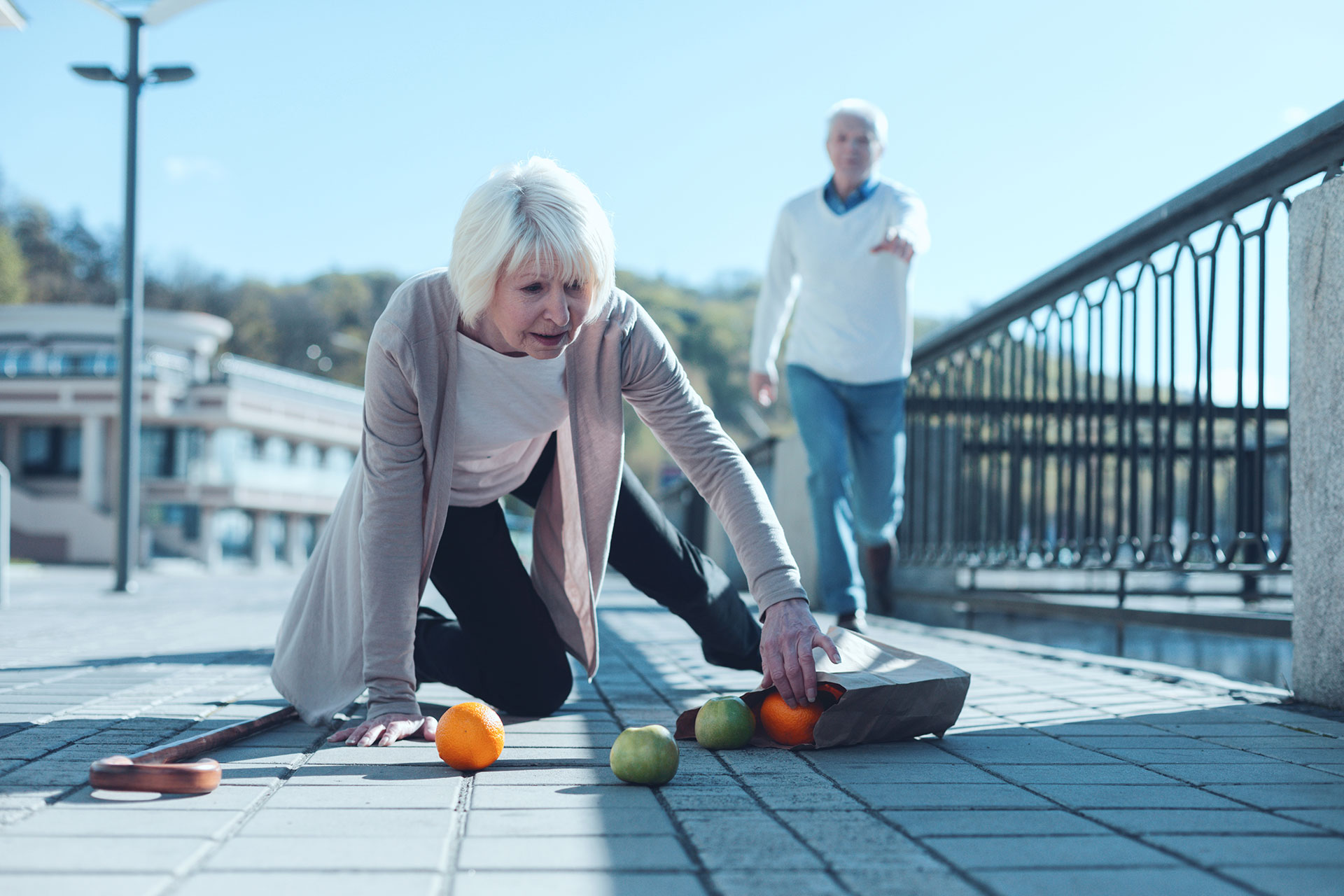Overview
Falls are a significant concern, especially for older adults or individuals with balance issues. A fall can lead to injuries, reduced confidence, and even long-term health complications. At our center, we focus on understanding the underlying causes of falls—whether due to balance problems, muscle weakness, or neurological conditions—and offer personalized care to reduce risks and improve safety.
Types
Falls can occur for a variety of reasons, including:
- Accidental Falls: Tripping over obstacles or slipping on uneven surfaces.
- Balance-Related Falls: Often caused by vestibular disorders or muscle weakness.
- Syncope (Fainting): A sudden loss of consciousness due to low blood pressure or heart issues, leading to a fall.
- Drop Attacks: Sudden loss of muscle control without warning, often linked to neurological conditions.
- Postural Instability: Difficulty maintaining balance when standing or walking, common in conditions like Parkinson’s disease.
Understanding the type of fall helps us address the root cause effectively.
Symptoms
Indicators that you may be at risk for falls include:
- Frequent tripping or stumbling
- Difficulty maintaining balance, especially on uneven surfaces
- Feeling unsteady when standing or walking
- Dizziness or lightheadedness
- Muscle weakness or joint instability
Recognizing these warning signs can help prevent serious injuries.
Diagnosis
At our center, diagnosing fall risks involves:
- Detailed Medical History: Understanding your history of falls, medications, and underlying health conditions.
- Physical Examination: Assessing muscle strength, joint mobility, and posture.
- Balance Testing: Using advanced tools like videonystagmography (VNG) to evaluate your inner ear and balance function.
- Neurological Evaluation: Checking for conditions like neuropathy or Parkinson’s that may contribute to instability.
- Functional Assessments: Testing gait and walking patterns to identify risk factors.
This thorough evaluation helps us create a targeted plan to prevent future falls.
Treatment
Our fall prevention strategies are tailored to your needs and may include:
- Balance Training: Exercises to improve stability and coordination.
- Strengthening Programs: Physical therapy to build muscle strength and joint support.
- Assistive Devices: Recommending canes, walkers, or other aids to enhance mobility.
- Home Modifications: Suggestions for reducing fall risks, like improving lighting and removing tripping hazards.
- Medication Management: Reviewing and adjusting medications that may affect balance.
With the right approach, we can help you stay active, independent, and confident in your movements.

